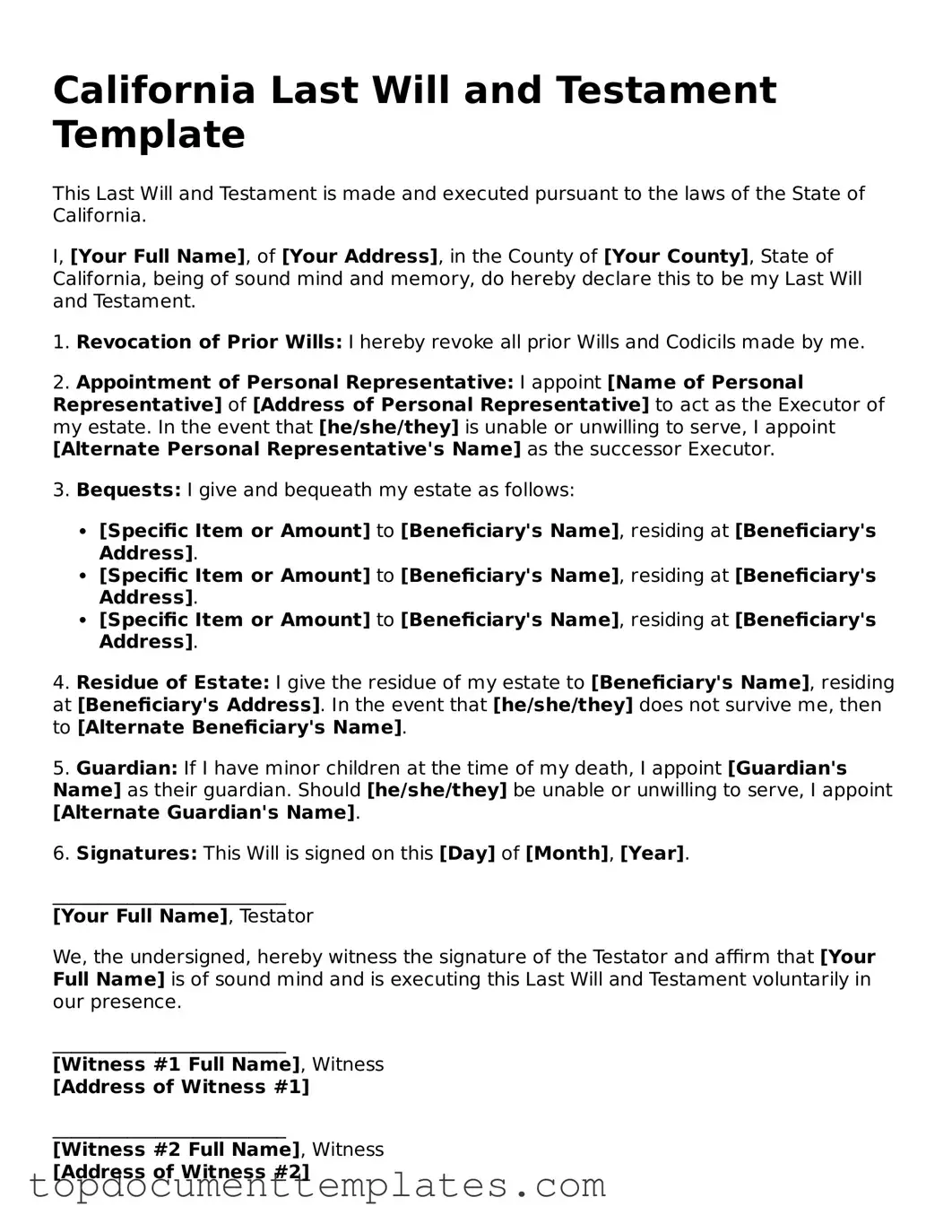Creating a Last Will and Testament is a crucial step in ensuring that your wishes are honored after your passing, especially in a state as diverse and complex as California. This legal document allows you to specify how your assets will be distributed, who will take care of any minor children, and who will be responsible for executing your wishes. In California, the Last Will and Testament form must meet specific requirements to be considered valid, such as being signed by you and witnessed by at least two individuals. It’s important to understand that this form not only provides peace of mind but also helps to avoid potential disputes among family members. Additionally, California offers various options for how you can structure your will, including provisions for guardianship and trusts, which can further safeguard your loved ones' futures. By taking the time to craft a well-thought-out will, you ensure that your legacy is managed according to your desires, making the process easier for those you leave behind.
